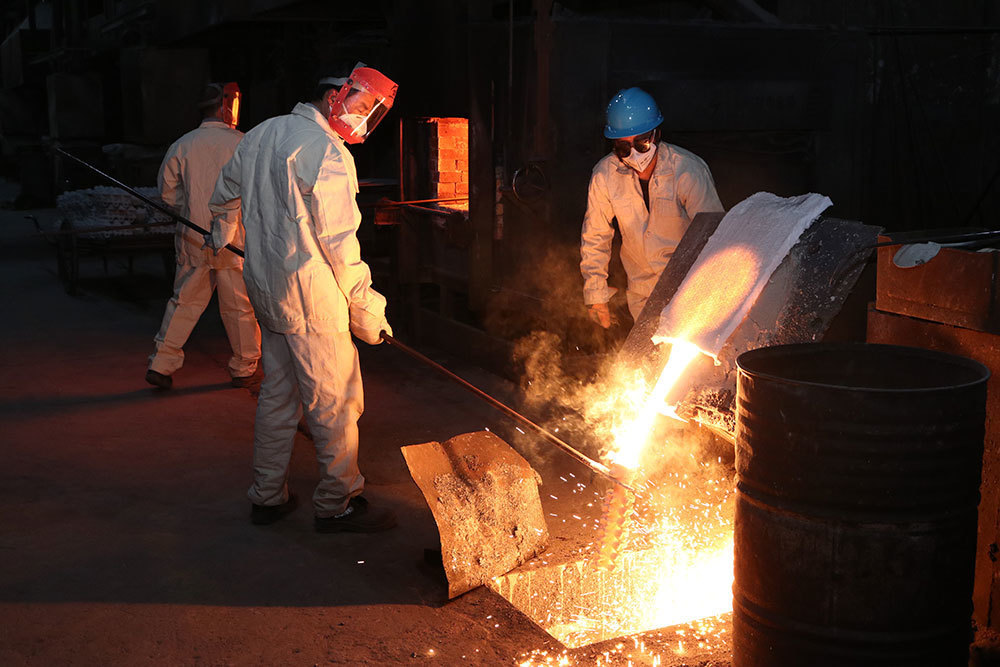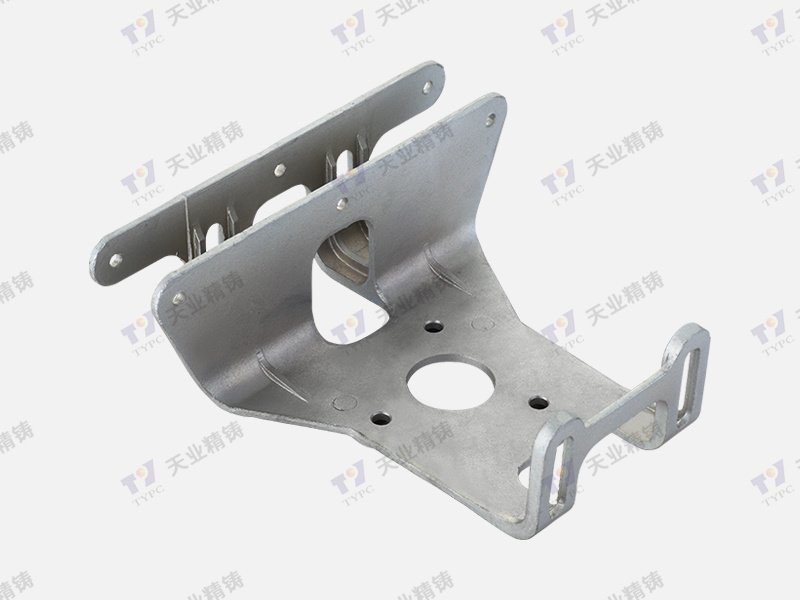2025-04-03
Powering Progress: Essential Components for a High-Performance Industrial System
Powering Progress: Essential Components for a High-Performance Industrial System
In the ever-evolving landscape of industrial operations, maximizing efficiency is paramount. The backbone of any successful industrial system lies in its components. Understanding these essential parts, their functionality, and how they interconnect is crucial for achieving optimal performance. This article delves into the components that power progress in the industrial sector, providing insights into their roles, advantages, and best practices for integration.
Table of Contents
- 1. Introduction to Industrial Systems and Components
- 2. Key Components of High-Performance Industrial Systems
- 2.1 Motors and Drives
- 2.2 Sensors and Control Systems
- 2.3 Pneumatics and Hydraulics
- 2.4 Conveyors and Material Handling Systems
- 2.5 Valves and Connectors
- 3. Benefits of Investing in High-Performance Components
- 4. Integrating Components for Enhanced Efficiency
- 5. Maintenance and Reliability of Industrial Components
- 6. Future Trends in Industrial Components
- 7. Conclusion
- 8. Frequently Asked Questions
1. Introduction to Industrial Systems and Components
Industrial systems are the lifeblood of manufacturing and production sectors. These systems consist of a myriad of components that work synergistically to facilitate complex processes. From assembly lines to processing plants, the **efficiency of an industrial system** significantly relies on the quality and functionality of its components. In this section, we will introduce the importance of these components, setting the stage for a deeper exploration of their roles.
2. Key Components of High-Performance Industrial Systems
High-performance industrial systems incorporate a variety of critical components, each serving a unique purpose while contributing to the overall efficiency of the operation. Understanding these components is essential for anyone looking to enhance their industrial setup.
2.1 Motors and Drives
Motors and drives are the **heart** of an industrial system. They convert electrical energy into mechanical energy, enabling machinery and equipment to operate smoothly. The choice of motor type—whether it's AC, DC, or stepper—can significantly impact performance and energy consumption. Properly sized motors ensure optimal operation, while advanced drive technologies, such as variable frequency drives (VFDs), allow for precise control over speed and torque, leading to enhancements in productivity and energy savings.
2.2 Sensors and Control Systems
Innovative technology has revolutionized the role of **sensors and control systems** in industrial applications. These components allow for real-time monitoring and precise control of machinery. By integrating sensors with control systems, industries can gather data on performance, detect anomalies, and make informed decisions quickly. This leads to improved **process automation**, greater operational safety, and minimized downtime through predictive maintenance.
2.3 Pneumatics and Hydraulics
Pneumatic and hydraulic systems play a pivotal role in the movement and control of machinery. **Pneumatics** utilizes compressed air to generate motion, while **hydraulics** employs pressurized fluid. Both systems offer distinct advantages depending on the application; for instance, hydraulics can transmit greater force, making it ideal for heavy lifting, while pneumatics provide quick response times in lighter applications. Understanding when to implement each system can enhance operational flexibility and efficiency.
2.4 Conveyors and Material Handling Systems
Efficient material handling is crucial for any industrial operation. **Conveyor systems** streamline the movement of materials, reducing manual labor and potential errors. Modern conveyor systems can be automated and equipped with sensors to optimize flow and monitor inventory levels. This integration leads to enhanced productivity, reduced workplace injuries, and better resource management.
2.5 Valves and Connectors
Valves and connectors are often overlooked, yet they are essential for controlling the flow of fluids and gases in industrial systems. **Valves** regulate pressure, flow, and direction, while **connectors** provide secure linkages between components. Quality valves and connectors can prevent leaks and ensure system integrity, contributing to overall safety and performance.
3. Benefits of Investing in High-Performance Components
Investing in high-performance components yields significant advantages for industrial operations. These benefits include:
- Increased Efficiency: High-performance components are designed to operate at optimal levels, reducing energy consumption and operational costs.
- Improved Reliability: Quality components lead to fewer breakdowns, minimizing downtime and maintenance costs.
- Enhanced Productivity: Efficient systems allow for faster production rates and better use of resources.
- Greater Safety: Reliable components reduce the risk of accidents and failures, ensuring a safer working environment.
- Long-Term Savings: While the initial investment may be higher, the long-term savings from reduced energy costs and maintenance can be significant.
4. Integrating Components for Enhanced Efficiency
To harness the full potential of industrial components, integration is key. **System integration** involves ensuring that all components communicate effectively and work in harmony. This can be achieved through:
- Unified Control Systems: Implementing a centralized control system allows for seamless interaction between different components, improving response times and decision-making.
- Standardized Interfaces: Using standardized connectors and protocols facilitates easier integration and compatibility between various systems.
- Data Analytics: Leveraging data from sensors and control systems enables predictive maintenance, helping to identify potential issues before they lead to failures.
5. Maintenance and Reliability of Industrial Components
Regular maintenance is crucial for ensuring the longevity and reliability of industrial components. Establishing a robust maintenance schedule includes:
- Routine Inspections: Regular checks allow for the early detection of wear and tear.
- Predictive Maintenance: Utilizing data analytics to predict failures can save time and costs associated with unexpected breakdowns.
- Training Personnel: Well-trained staff can recognize potential issues and carry out maintenance effectively, ensuring optimal operation of all components.
6. Future Trends in Industrial Components
The industrial sector is continually evolving, driven by technological advancements. Some key trends to watch include:
- Internet of Things (IoT): IoT technology is facilitating smarter factories through interconnected devices that offer real-time monitoring and control.
- Artificial Intelligence (AI): AI is enhancing predictive maintenance and operational efficiency through data analysis and machine learning.
- Eco-Friendly Components: As sustainability becomes more essential, industries are adopting components that reduce environmental impact.
7. Conclusion
In summary, understanding and investing in **high-performance industrial components** is crucial for optimizing industrial systems. Each component plays a unique role in enhancing efficiency, productivity, and safety. By integrating these components effectively and maintaining them regularly, industries can ensure a sustainable and profitable future. Keeping abreast of trends and technological advancements will further empower industries to adapt and thrive in an increasingly competitive landscape.
8. Frequently Asked Questions
What are the main components of an industrial system?
The primary components include motors and drives, sensors and control systems, pneumatics and hydraulics, conveyors, and valves and connectors.
How do motors and drives impact industrial performance?
Motors and drives convert electrical energy into mechanical motion, affecting efficiency, speed, and energy consumption in industrial operations.
Why is integration important for industrial components?
Integration ensures that all components communicate effectively, leading to improved efficiency, productivity, and streamlined operations.
What maintenance practices should be implemented for industrial components?
Routine inspections, predictive maintenance, and training personnel are key practices for maintaining the reliability of industrial components.
What future trends should industries watch for?
Industries should monitor trends such as IoT, AI, and the adoption of eco-friendly components to stay competitive and efficient.









